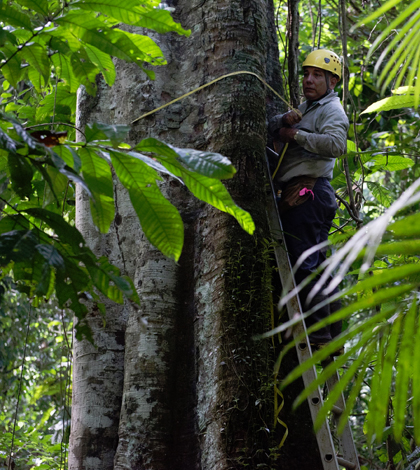Secondary Forests Have Huge Carbon Sequestration Potential

Researchres measure more than 200,000 trees every five years. (Credit: Sean Mattson / Smithsonian Tropical Research Institute)
When conservation priorities for tropical forests are set, old-growth forests that show no sign of human disturbance often come out ahead of secondary forests. In a new study, an international team of researchers measured 168,000 trees in 1,468 plots across 45 sites throughout the Neotropics to document recovery rates for aboveground biomass. They also considered which environmental factors might be driving the recovery.
The team hypothesized that recovery rates would go up with increased water availability and soil fertility and down with increasing loss of the surrounding forest as well as the intensity of prior land use. After 20 years of regeneration, the average aboveground biomass recovered 122 megagrams per hectare. This corresponded to a net carbon uptake of 3.05 megagrams per hectare per year, approximately 11 times the recovery rate of certain old-growth forests.
Only water availability was significant when accounting for aboveground biomass recovery rates. Cation exchange capacity (a measure of certain soil nutrients), current forest cover and prior land use (pasture or row crops) were all insignificant. Authors note that the magnitudes of the soil fertility and land use effects may not have been fully captured.
Top image: Researchres measure more than 200,000 trees every five years. (Credit: Sean Mattson / Smithsonian Tropical Research Institute)




Pingback: Environmental Monitor | Balancing Forest Biodiversity and Land Use Benefits - News